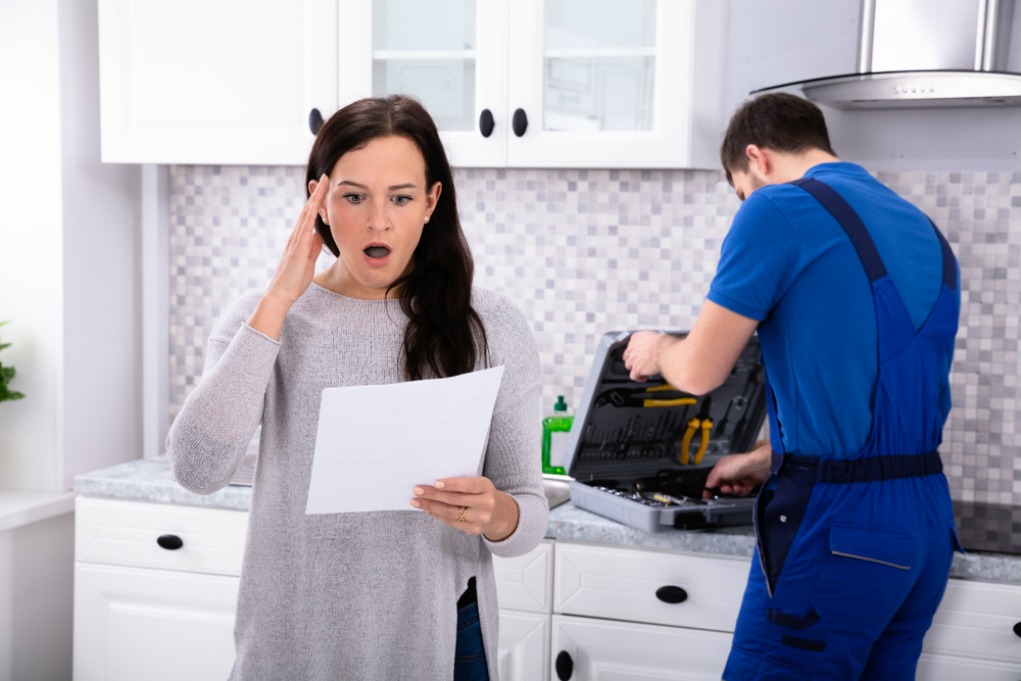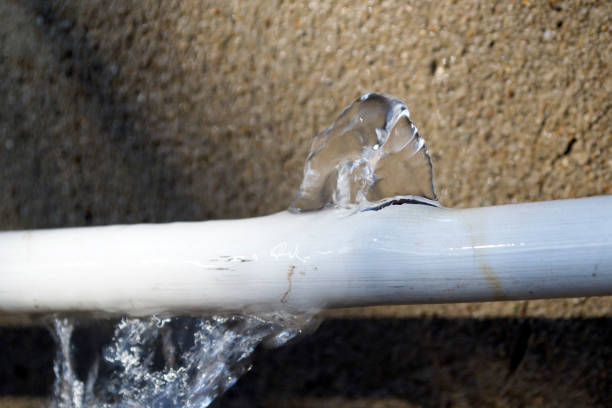We have come across this article involving Common Plumbing Problems in Older Homes below on the internet and figured it made sense to relate it with you on this page.

Older homes typically come with charm, character, and history, however they can additionally bring a host of pipes issues. Whether you're taking care of maturing pipelines, low water stress, or leaks, recognizing exactly how to resolve these usual problems is important to keeping a risk-free and useful home. In this guide, we'll discover the regular plumbing obstacles faced by older homes and supply sensible services to keep your plumbing in leading form.
Comprehending Common Plumbing Issues
Aging Pipelines
Among one of the most common issues in older homes is aging pipelines. Depending on the period in which your home was constructed, the pipes might be made from products that have weakened with time, such as galvanized steel, cast iron, or even lead. These products can corrode, come to be weak, or establish leakages, leading to water damage and potential health hazards.
Low Water Stress
If you're experiencing low tide pressure, it could be as a result of mineral deposits, deterioration inside the pipes, or old fixtures that are no more working effectively. This can be a major inconvenience, specifically in areas like showers and sinks.
Leaking Pipelines
Leakages are another regular concern in older homes, usually triggered by corroded or worn-out pipelines. Even small leaks can result in substantial water damages, mold growth, and boosted water bills if not resolved quickly.
Out-of-date Components
Obsolete pipes components such as faucets, bathrooms, and showerheads not just look old yet might also be less reliable, prone to leaks, or incompatible with modern-day pipes criteria.
Pipeline Deterioration
Deterioration is a common problem in older pipelines, specifically those made from galvanized steel or actors iron. Corroded pipes can restrict water flow, cause discoloration, and ultimately result in leaks or pipe ruptureds.
Assessing the Condition of Your Plumbing
Inspecting Noticeable Pipelines
Beginning by examining any type of visible pipes in your home, such as those in cellars, crawl spaces, or under sinks. Look for signs of corrosion, leaks, or rust, which can indicate underlying issues.
Checking for Leakages
Look for leaks by examining areas around taps, commodes, and under sinks. You can likewise monitor your water meter before and after a duration of no water utilize to discover covert leaks.
Water Top Quality Screening
Older pipes can influence the top quality of your water. Conduct a water top quality test to check for impurities such as lead, corrosion, or other pollutants that may be presented by maturing pipes.
Solutions for Common Pipes Problems
Changing Aging Pipelines
If your home has old, weakening pipelines, take into consideration replacing them with modern products like copper or PEX. This can be a substantial financial investment, but it will certainly stop future issues and boost the security and dependability of your plumbing system.
Taking Care Of Low Water Stress
To repair low tide pressure, beginning by cleaning or replacing old components and eliminating mineral buildup in the pipelines. If the problem lingers, it may be needed to change areas of corroded pipelines.
Repairing and Changing Dripping Pipelines
For tiny leakages, you can make use of pipe clamps or epoxy putty as a short-term repair. Nevertheless, it's best to replace dripping pipelines totally to stay clear of further damage.
Updating Fixtures
Updating old fixtures to modern-day, water-efficient versions can enhance your home's pipes performance and decrease water usage. Seek components with the WaterSense label for the very best efficiency.
Dealing with Pipe Deterioration
If your pipes are worn away, replacing them with corrosion-resistant products like copper, PVC, or PEX is the best solution. Routine examinations and water quality maintenance can aid prevent further rust.
When to Call an Expert
While some pipes issues can be handled with do it yourself options, there are times when it's ideal to employ an expert. If you're taking care of significant leaks, comprehensive corrosion, or are unsure about the condition of your pipes, a certified plumber can supply skilled analysis and repair.
Preventive Upkeep Tips
Routine Examinations
Regularly examine your plumbing system for signs of wear and tear. Capturing issues early can prevent pricey repairs down the line.
Water Stress Regulation
Ensure your water stress is within the advised variety to prevent worrying your pipes and fixtures. A plumbing technician can mount a pressure regulator if needed.
Water High Quality Maintenance
Set up water filters or softeners if your water quality is poor. This can protect your pipes and components from damages brought on by difficult water or pollutants.
Proactive Pipeline Substitute
If your home has older pipes, consider proactive substitute prior to significant concerns develop. This can save you from emergency repairs and water damages.
Verdict
Dealing with pipes problems in older homes needs a combination of vigilance, preventative upkeep, and prompt upgrades. By recognizing the typical challenges and knowing when to look for expert assistance, you can guarantee your plumbing system continues to be useful and reliable for years to come.
Common Plumbing Issues in Older Homes and How to Fix Them
Owning an older home in Australia comes with its unique charm and a set of challenges, especially when it comes to plumbing. The Sunshine Coast has many older properties that can harbour plumbing problems that aren t just inconvenient but potentially costly. Here s a look at some common plumbing issues in older homes and expert advice on how to handle them.
Outdated Piping Materials
Many older homes were built with galvanised steel, cast iron, or even lead pipes, materials that are far from ideal by today s standards. Galvanised pipes are prone to corrosion and clogging, while lead pipes pose serious health risks.
How to Fix:
Replacing old pipes is a job for a professional. Upgrading to copper or PVC piping not only enhances water quality and flow but also increases the property s safety and value. If you suspect your home has outdated materials, a licensed plumber can conduct a thorough inspection and recommend the best course of action.
Corrosion and Pipe Degradation
Over time, exposure to water and minerals can cause pipes to corrode, leading to leaks, bursts, and water contamination. Corrosion is especially common in homes over 50 years old.
How to Fix:
Regular inspections can catch early signs of corrosion. If corrosion is found, the affected section of piping often needs to be replaced. For homes with extensive corrosion, a complete plumbing overhaul might be necessary. It s crucial to consult with a plumbing expert to understand the extent of the issue.
Tree Root Intrusion
Older neighbourhoods usually have mature trees whose roots can intrude into pipe lines, causing blockages or damage. This is particularly problematic for sewer lines, where roots seek out water sources.
How to Fix:
A plumber can use a specialised camera to inspect sewer lines for root intrusion. If roots are a problem, methods like root cutting or hydro-jetting can clear the obstruction. In severe cases, part of the pipe may need replacing. Consider root barriers around the piping to prevent future issues.
Inadequate Water Pressure
Low water pressure in older homes can be due to various factors, including corroded water lines, sediment build-up in pipes, or outdated fixtures.
How to Fix:
First, check if the low pressure is isolated to one area or throughout the house. Replacing old fixtures can sometimes resolve the issue. However, if the problem is more widespread, it might be due to sediment or corrosion. Flushing the system or replacing the affected pipes usually restores normal pressure. Again, a professional assessment is advisable.
Outdated Fixtures
Older homes often feature fixtures that are not only visually dated but functionally inefficient. This includes everything from toilets and taps to showerheads and washing machine hoses.
How to Fix:
Updating these fixtures can improve both water efficiency and the aesthetic appeal of your home. Modern fixtures are designed to conserve water, which can significantly reduce your water bill and lessen your environmental impact.
Conclusion
Maintaining the plumbing in an older home requires a proactive approach. Regular checks and updates are key to preserving these beautiful properties. If you re facing plumbing issues in your older home, it s best to call on experienced professionals like Green & Gold Plumbing & Gas. With the right expertise, even the most daunting plumbing problems can be resolved, ensuring that your home s character is maintained while its functionality is enhanced.
https://gandgplumbing.com.au/common-plumbing-issues-in-older-homes-and-how-to-fix-them/

I came across that blog entry about Common Plumbing Challenges In Old Buildings when scouting around the web. Remember to pause to promote this write-up if you appreciated it. I recognize the value of reading our article about .
Book Appointment
 Jenna Jameson Then & Now!
Jenna Jameson Then & Now! Sydney Simpson Then & Now!
Sydney Simpson Then & Now! Talia Balsam Then & Now!
Talia Balsam Then & Now! Bernadette Peters Then & Now!
Bernadette Peters Then & Now! Nadia Bjorlin Then & Now!
Nadia Bjorlin Then & Now!